High in the misty bamboo forests of the Himalayas, a creature that looks like nature decided to mix a teddy bear with a raccoon has mastered the art of arboreal living. Red pandas aren’t just cute faces with fluffy tails – they’re evolutionary masterpieces that have spent millions of years perfecting their tree-dwelling lifestyle. These remarkable animals have developed an arsenal of adaptations that would make even the most skilled acrobat jealous. From their grippy paws to their incredible balance, every aspect of their anatomy tells a story of survival in the canopy. While most people know red pandas for their adorable appearance, few realize just how specialized these creatures have become for their aerial lifestyle.
13. Semi-Retractable Claws for Ultimate Grip

Red pandas possess semi-retractable claws that work like nature’s own climbing gear, allowing them to dig deep into tree bark for secure holds. Unlike cats with fully retractable claws or dogs with fixed ones, red pandas hit the perfect middle ground that serves their arboreal needs. These curved, sharp claws can extend when needed for climbing and partially retract to protect them during walking on branches. The claws are incredibly strong and can support the panda’s entire body weight when hanging from a single limb. This adaptation is so effective that red pandas can climb down trees headfirst, something most mammals simply cannot do safely.
12. Flexible Ankle Joints That Rotate 180 Degrees

Perhaps one of the most remarkable adaptations red pandas have is their incredibly flexible ankle joints that can rotate nearly 180 degrees. This extraordinary flexibility allows them to climb down trees headfirst by rotating their hind feet backward to maintain grip on the trunk. Think of it like having built-in swivel joints that let you face any direction while your feet stay planted. This adaptation gives red pandas a massive advantage when escaping predators or simply navigating the complex three-dimensional world of the forest canopy. Few mammals possess this level of ankle flexibility, making red pandas true specialists of vertical movement.
11. Specialized Wrist Bones for Enhanced Gripping

Red pandas have developed a modified wrist bone called a “pseudo-thumb” that functions like an opposable digit for gripping branches and bamboo. This extra appendage, technically a radial sesamoid bone, extends from their wrist and is covered in flesh and fur to create a sixth digit. The pseudo-thumb allows red pandas to wrap their paws completely around branches, creating a secure grip that prevents slipping during rapid movements. This adaptation is so useful that it evolved independently in both red pandas and giant pandas, showing just how valuable extra gripping power is for bamboo-eating, tree-dwelling animals. The pseudo-thumb also helps them manipulate bamboo stalks with surprising dexterity when feeding.
10. Dense Fur on Paw Pads for Better Traction

Unlike most mammals that have bare paw pads, red pandas sport thick, dense fur covering the soles of their feet, creating natural non-slip socks. This furry padding provides incredible traction on wet or icy branches, which is crucial in their high-altitude mountain habitats where conditions can be treacherous. The fur also insulates their feet from the cold, preventing frostbite during harsh winter months when temperatures can drop well below freezing. Additionally, the soft fur helps muffle their footsteps, making them nearly silent as they move through the trees – a useful trait for avoiding predators. This adaptation is so effective that red pandas can confidently navigate even the smallest, most precarious branches without losing their footing.
9. Incredibly Long and Muscular Tail for Balance
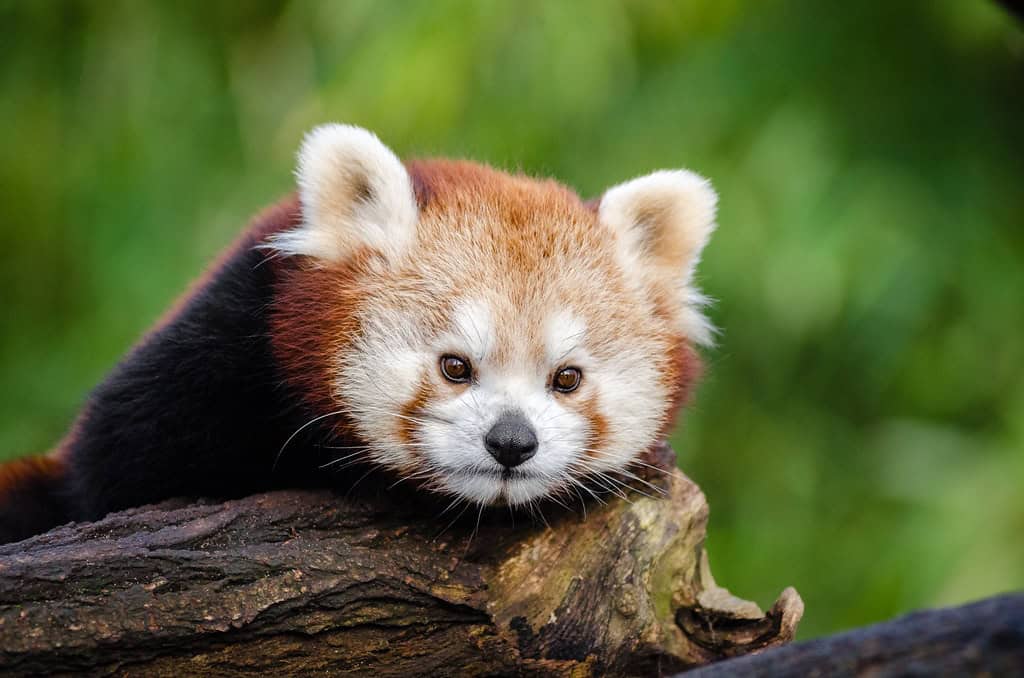
A red panda’s tail isn’t just for show – it’s a sophisticated balancing tool that makes up nearly half of their total body length and serves as a biological tightrope walker’s pole. The tail contains over 20 vertebrae surrounded by powerful muscles that can move independently to counterbalance the panda’s body during complex maneuvers. When walking along narrow branches or making sharp turns, red pandas use their tails like a rudder, shifting weight to maintain perfect equilibrium. The tail is so important to their arboreal lifestyle that red pandas can often be seen using it as an anchor, wrapping it around branches for extra security during risky moves. In cold weather, they even curl their fluffy tails around their bodies like a built-in blanket while sleeping in tree hollows.
8. Powerful Hind Limb Muscles for Explosive Jumping
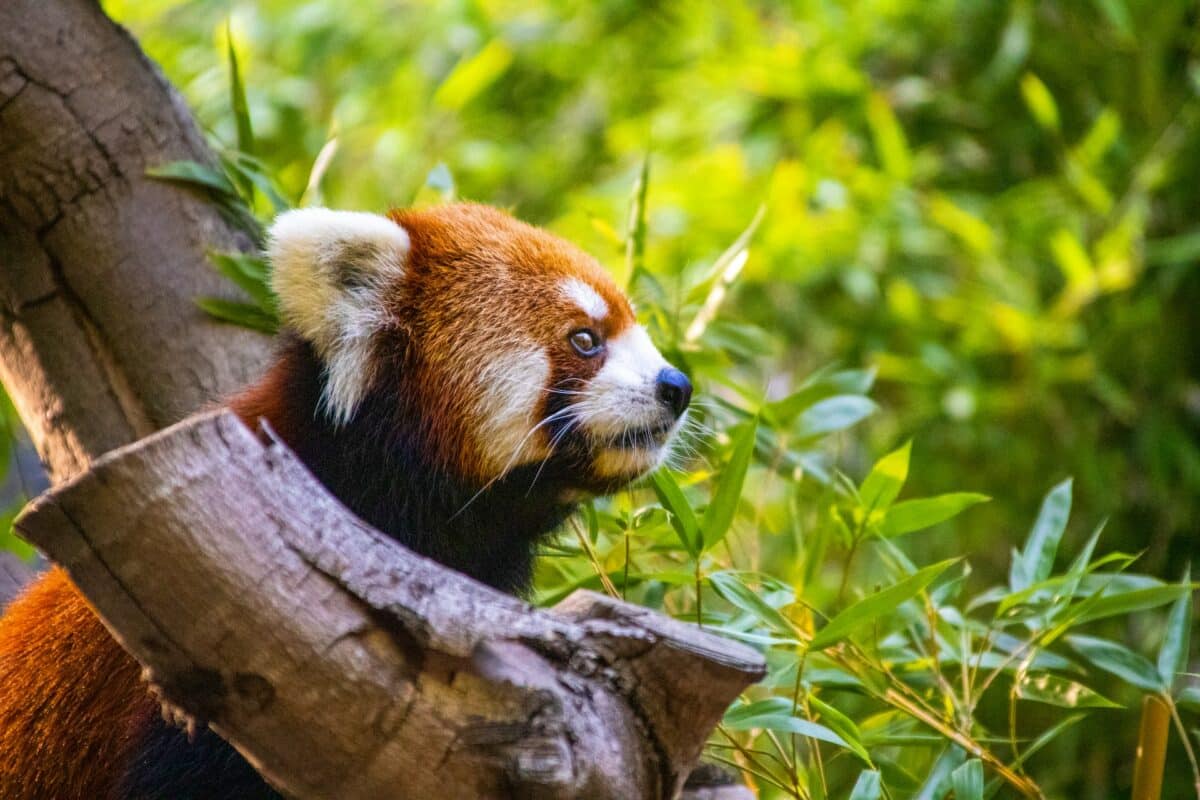
Red pandas have developed exceptionally strong hind leg muscles that allow them to make impressive leaps between trees, sometimes spanning gaps of over six feet. These powerful haunches work like coiled springs, storing energy that can be released in explosive bursts of movement when escaping danger or pursuing food. Their jumping ability is so refined that they can accurately land on branches as thin as their own arms without losing balance. The muscle development in their hind legs also provides the strength needed for their unique headfirst climbing technique, allowing them to control their descent with precision. This powerful lower body makes red pandas surprisingly athletic despite their cuddly appearance.
7. Specialized Shoulder Structure for 360-Degree Arm Movement
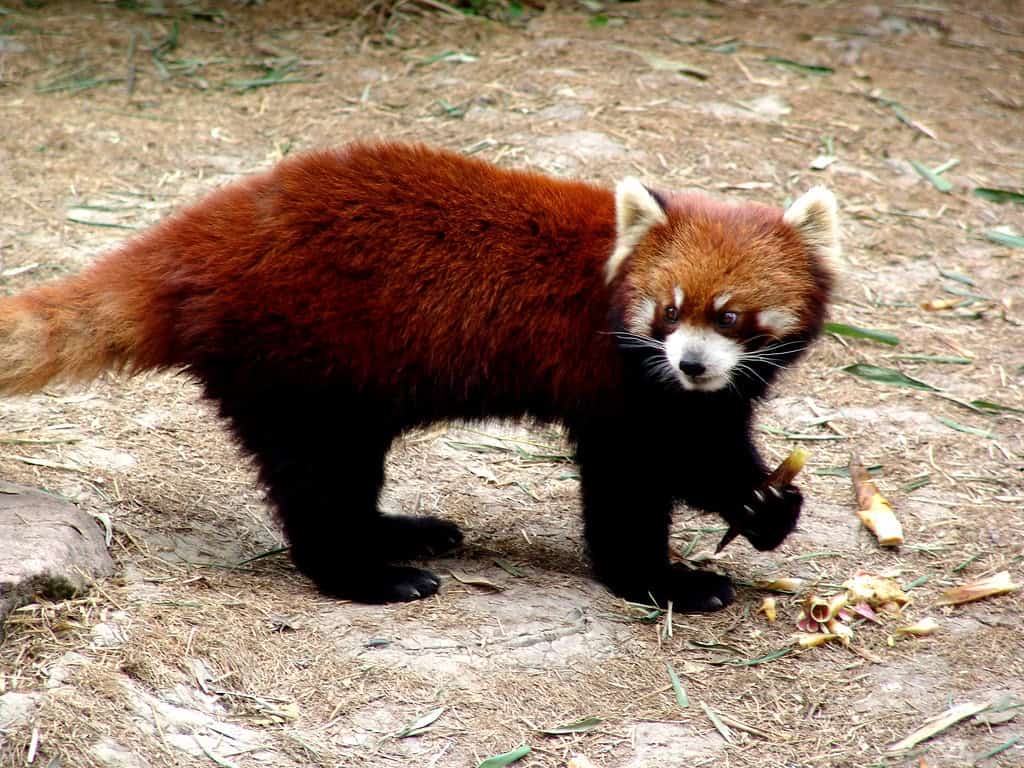
The shoulder joints of red pandas are remarkably flexible, allowing their front limbs to rotate in almost complete circles for maximum reach while climbing. This exceptional range of motion lets them grab branches above, below, and to either side without having to reposition their entire body. Their shoulder structure is similar to that of primates, giving them an almost arm-like quality to their front limbs that most other carnivores lack. This adaptation is particularly useful when reaching for bamboo shoots or navigating through dense canopy where branches may be scattered in unpredictable patterns. The flexible shoulders also allow red pandas to hang from branches using just their front paws, a skill that proves invaluable during emergency escapes.
6. Enhanced Inner Ear Structure for Superior Balance
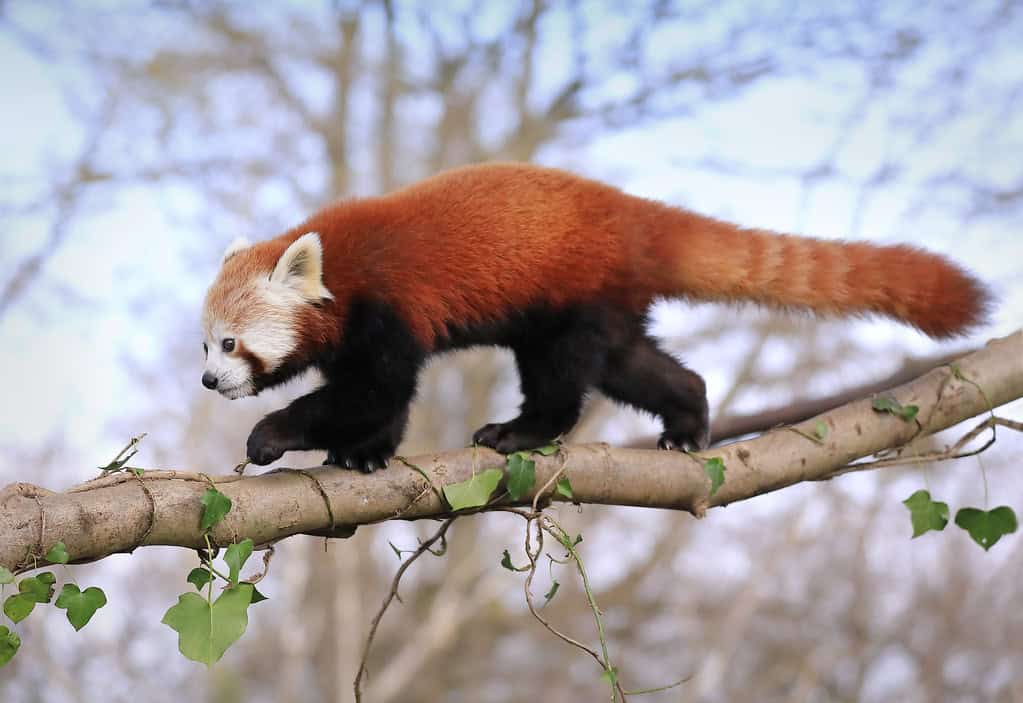
Red pandas possess highly developed vestibular systems in their inner ears that provide exceptional spatial awareness and balance control while moving through three-dimensional forest environments. Their inner ear structures are more complex than those of ground-dwelling relatives, featuring enlarged semicircular canals that detect even the slightest changes in head position. This sophisticated balance system allows red pandas to make split-second adjustments to their posture while navigating unstable or swaying branches. The enhanced inner ear also helps them maintain orientation during rapid movements, such as when scrambling up tree trunks or making quick directional changes to avoid falling. This adaptation is so effective that red pandas rarely lose their balance, even during the most acrobatic maneuvers.
5. Compact Body Size with Low Center of Gravity
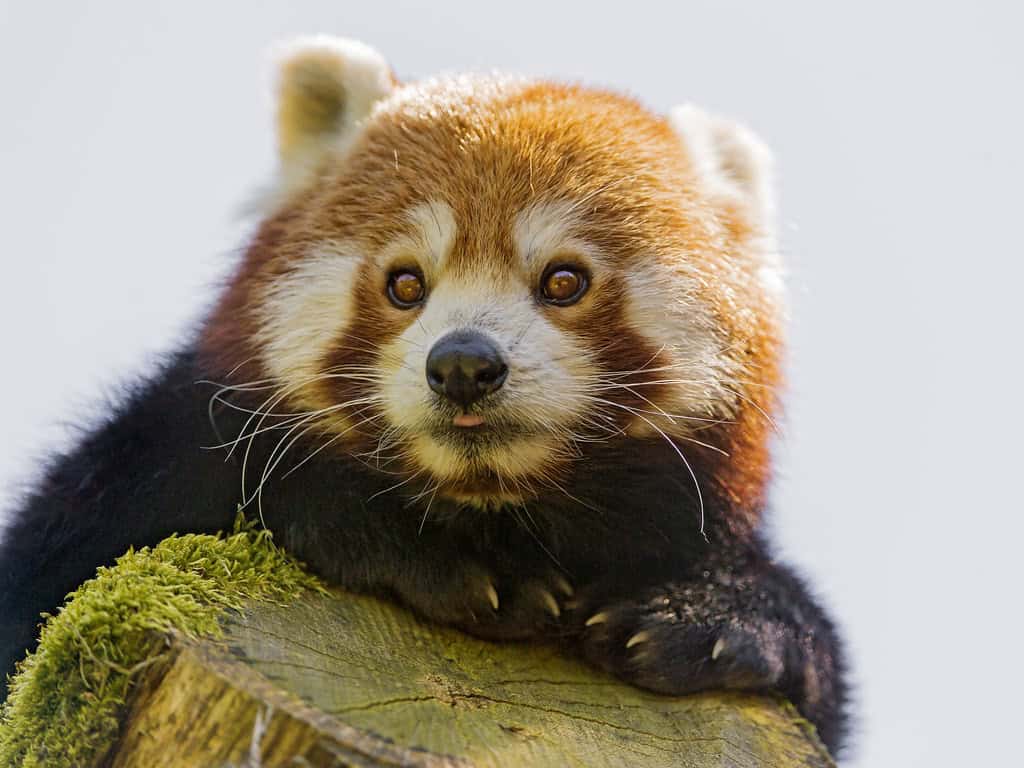
Red pandas have evolved a compact, stocky build with relatively short legs that creates a low center of gravity perfect for stable movement along branches. Their body proportions are ideal for arboreal life – heavy enough to maintain momentum during jumps but light enough to avoid breaking smaller branches. The compact size also allows them to fit into tight spaces like tree hollows and dense bamboo thickets where larger predators cannot follow. Their stocky build distributes weight evenly across four limbs, reducing the stress on any single branch and allowing them to traverse even relatively fragile supports. This body design is like having a built-in stabilization system that makes falling much less likely.
4. Acute Depth Perception from Forward-Facing Eyes
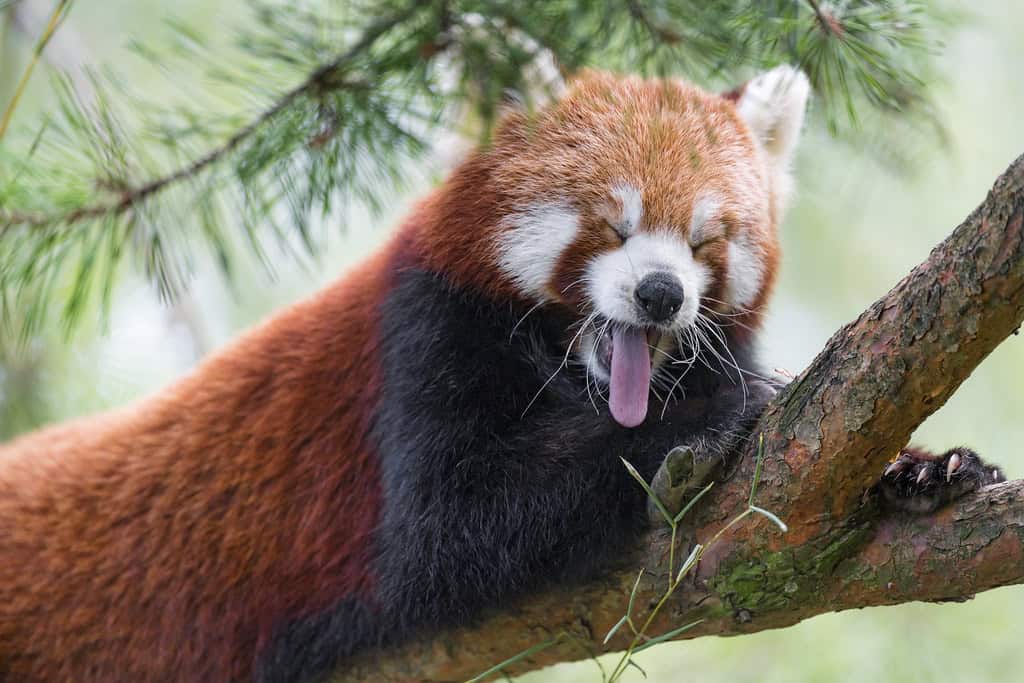
Unlike many mammals that have eyes positioned on the sides of their heads, red pandas have forward-facing eyes that provide excellent binocular vision and depth perception crucial for judging distances between branches. This eye positioning creates significant overlap in their visual fields, allowing their brains to calculate precise distances when making leaps or reaching for handholds. Their large eyes also gather more light, helping them navigate during dawn and dusk when they’re most active and lighting conditions are challenging. The enhanced depth perception is particularly important when moving quickly through the canopy, where a miscalculation of just a few inches could result in a dangerous fall. This visual adaptation gives red pandas the confidence to make seemingly impossible jumps with remarkable accuracy.
3. Strong Grip Strength in All Four Paws
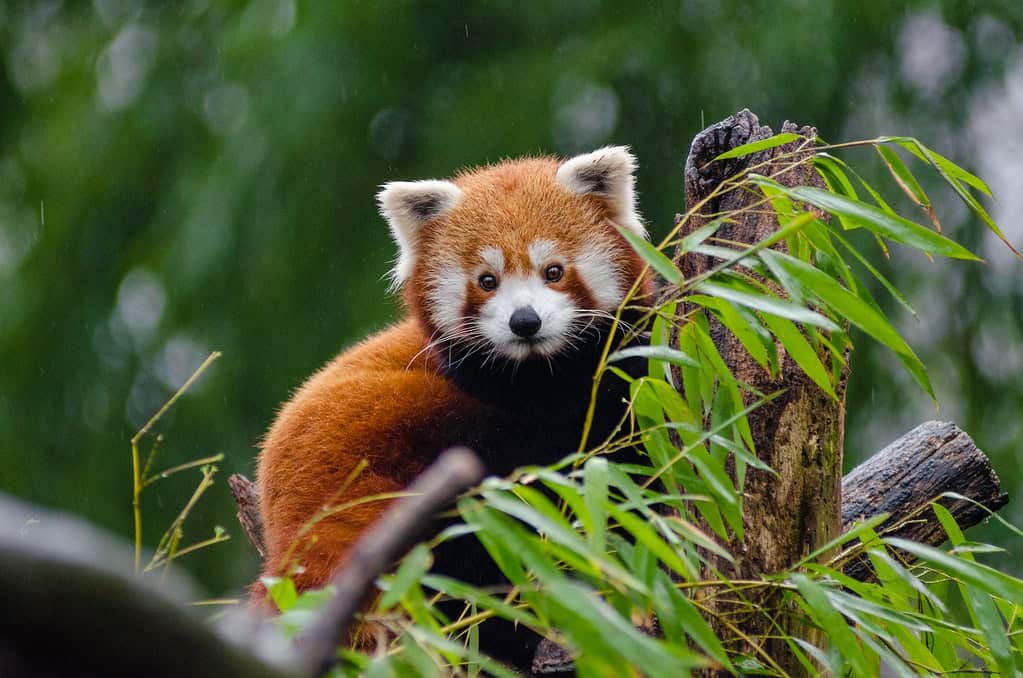
Red pandas have developed incredible grip strength in their paws, with each foot capable of supporting their entire body weight independently during climbing maneuvers. Their paw muscles are disproportionately strong compared to their overall size, allowing them to maintain secure holds even on smooth or wet surfaces. This powerful grip enables red pandas to hang upside down from branches, sleep while gripping tree limbs, and maintain contact with supports even during strong winds. The strength is so impressive that red pandas can support themselves with just their hind paws while using their front paws to manipulate food or explore their surroundings. This adaptation essentially gives them four hands instead of traditional paws, making them incredibly versatile climbers.
2. Lightweight but Strong Bone Structure

The skeletal system of red pandas represents a perfect balance between strength and weight, featuring hollow or thin-walled bones that provide structural support without adding unnecessary mass. Their bones are denser in key stress areas like joints and attachment points for major muscles, but lighter in areas where bulk would be a disadvantage. This engineered bone structure allows red pandas to move quickly through trees without the risk of branches breaking under their weight. The lightweight skeleton also reduces the energy required for climbing and jumping, allowing red pandas to remain active for longer periods while foraging. Their bone adaptations are similar to those found in birds, demonstrating how evolution can produce similar solutions for aerial lifestyle challenges.
1. Incredible Spatial Memory for Navigation

Red pandas have developed extraordinary spatial memory capabilities that allow them to create detailed mental maps of their three-dimensional forest territories, including the location and strength of every significant branch. This cognitive adaptation helps them navigate complex canopy highways with remarkable efficiency, choosing the safest and fastest routes between feeding areas and shelter. Their spatial memory is so precise that they can navigate familiar territory even in complete darkness, relying on their mental maps to avoid dangerous areas or unstable branches. This remarkable memory also helps them remember the locations of seasonal food sources and safe sleeping spots throughout their territory. The spatial awareness is enhanced by their ability to think in three dimensions, a skill that most ground-dwelling animals never develop to such a sophisticated degree.
Conclusion
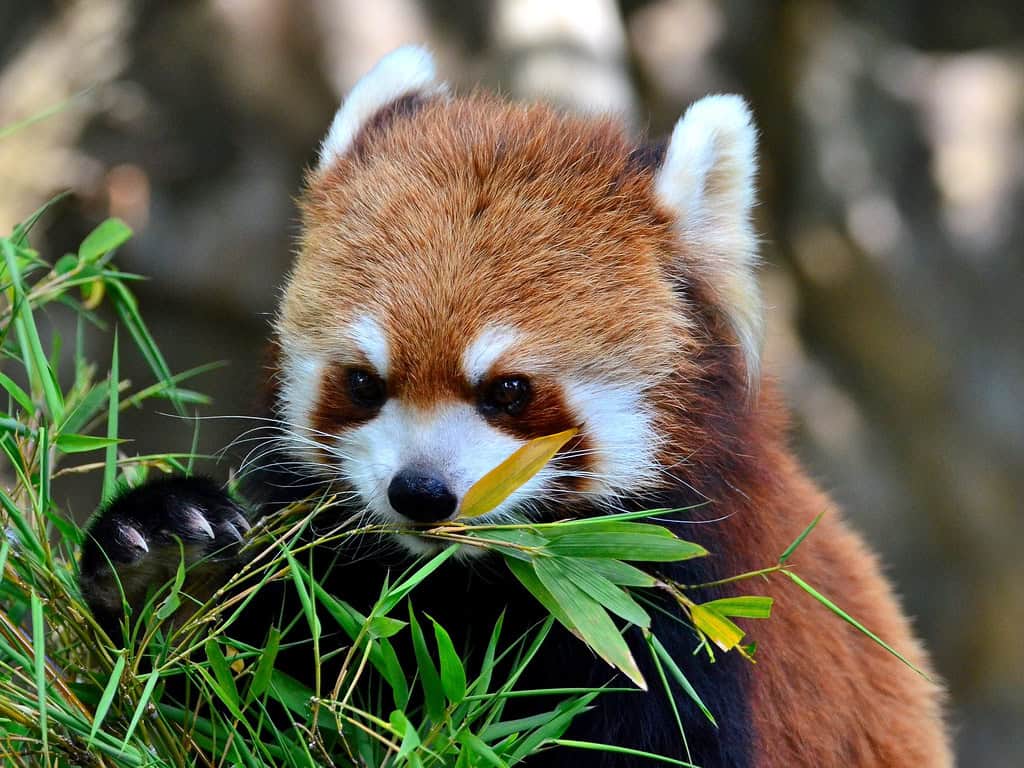
Red pandas represent one of nature’s most successful experiments in arboreal adaptation, combining physical modifications with cognitive abilities to create the ultimate tree-dwelling specialist. Every aspect of their anatomy and behavior has been fine-tuned over millions of years to excel in the challenging environment of mountain forest canopies. From their grippy pseudo-thumbs to their incredible spatial memory, these adaptations work together like components of a perfectly designed climbing machine. The next time you see a red panda gracefully moving through the trees, remember that you’re witnessing the result of countless generations of evolutionary refinement. What other secrets might these remarkable creatures still be hiding in their fluffy, adorable exterior?
- The Secretary Bird A Raptor That Hunts on Foot - August 9, 2025
- 10 Dog Breed Restrictions That Stir Controversy in U.S. States - August 9, 2025
- 13 Animals That Outsmart Their Predators - August 9, 2025

